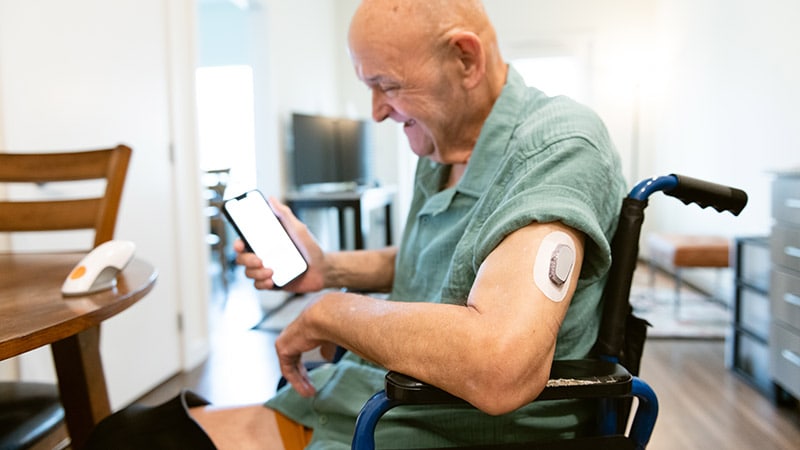insight - Medical Technology - # Flash Glucose Monitoring Recommendations for Type 2 Diabetes Management in Latin America
Recommendations for the Use of Flash Glucose Monitoring in Latin American Patients with Type 2 Diabetes
Core Concepts
Experts from various Latin American countries have established recommendations for the use of flash glucose monitoring system in monitoring glucose levels in patients with type 2 diabetes.
Abstract
The content discusses the recommendations for the use of flash glucose monitoring system in patients with type 2 diabetes in Latin America.
Key highlights:
- The International Diabetes Federation estimates that in 2021, the number of adults with diabetes in South and Central America was about 341 million. In Brazil, the disease affects 10.5% of the population, representing about 20 million people.
- Experts from Latin American countries, including Brazil, have established recommendations for the use of flash glucose monitoring system in monitoring glucose levels in patients with type 2 diabetes. The guidelines were published in Diabetology & Metabolic Syndrome.
- The flash glucose monitoring system uses a sensor placed in the subcutaneous tissue to measure interstitial glucose, providing frequent and continuous readings without the need for finger pricks.
- The experts reached a consensus on the number of daily readings necessary with the flash system for various patient profiles. For patients using oral antidiabetic drugs or basal insulin, the recommended average is 6 readings per day. Patients using multiple insulin doses should take an average of 10 readings per day.
- Accessibility to the flash glucose monitoring system remains a challenge in Brazil, as the cost of the sensor and reader can be a barrier for many patients. The system is not yet widely available in the Unified Health System (SUS), and its inclusion depends on public health policies and cost-benefit negotiations.
Customize Summary
Rewrite with AI
Generate Citations
Translate Source
To Another Language
Generate MindMap
from source content
Visit Source
www.medscape.com
Flash Glucose Monitoring: Latin American Recommendations
Stats
The number of adults with diabetes in South and Central America was about 341 million in 2021.
In Brazil, the disease affects 10.5% of the population, representing about 20 million people.
For patients using oral antidiabetic drugs or basal insulin, the recommended average is 6 readings per day with the flash glucose monitoring system.
Patients using multiple insulin doses should take an average of 10 readings per day with the flash glucose monitoring system.
Quotes
"The flash system is mainly used in patients who require frequent and continuous glucose monitoring, such as those with type 1 or type 2 diabetes who use multiple insulin doses. It can indeed, in many cases, replace standard monitoring done by blood test, providing a less invasive and more informative alternative for glucose management."
"Patients using multiple daily injections (MDI) need more daily measurements because they are more susceptible to rapid and significant glucose variations resulting from the frequent administration of rapid-acting insulin before meals. In addition, these patients need to monitor glucose more frequently to adjust insulin doses according to real-time readings, diet, and physical activity."
Key Insights Distilled From
by Teresa Santo... at www.medscape.com 06-21-2024
https://www.medscape.com/viewarticle/flash-glucose-monitoring-latin-american-recommendations-2024a1000bjk
Deeper Inquiries
What are the potential long-term benefits of widespread adoption of flash glucose monitoring in Latin American countries with high diabetes prevalence?
The widespread adoption of flash glucose monitoring in Latin American countries with high diabetes prevalence can bring several long-term benefits. Firstly, it can significantly improve the quality of life for individuals with diabetes by providing a more convenient and less invasive method of monitoring glucose levels. This can lead to better adherence to monitoring protocols and, consequently, improved glycemic control. Enhanced glycemic control can help reduce the risk of diabetes-related complications such as cardiovascular disease, neuropathy, and retinopathy, ultimately leading to better health outcomes and reduced healthcare costs in the long run. Additionally, by identifying patterns and trends in glucose levels over time, the flash system can empower patients and healthcare providers to make more informed decisions regarding treatment adjustments, lifestyle modifications, and overall diabetes management strategies.
What are the key barriers to improving accessibility and affordability of the flash glucose monitoring system for low-income patients in Latin America?
Several key barriers hinder the accessibility and affordability of the flash glucose monitoring system for low-income patients in Latin America. One significant barrier is the high cost of the sensor and reader, which can pose a financial burden for individuals with limited resources. The lack of coverage by public health systems, such as the Unified Health System (SUS) in Brazil, further exacerbates the issue, making it challenging for low-income patients to access this technology. Limited awareness and education about the benefits of flash glucose monitoring among healthcare providers and patients also contribute to the barriers. Moreover, the absence of comprehensive public health policies and cost-benefit negotiations to integrate the flash system as a standard monitoring tool in healthcare systems hinder its widespread adoption among low-income populations.
How can the integration of flash glucose monitoring data with other digital health technologies, such as mobile apps and telemedicine, enhance diabetes management and patient outcomes in the region?
The integration of flash glucose monitoring data with other digital health technologies, such as mobile apps and telemedicine, can revolutionize diabetes management and improve patient outcomes in Latin America. By leveraging mobile apps, patients can easily track and analyze their glucose data in real-time, set reminders for monitoring, and receive personalized insights and recommendations for better self-management. Telemedicine platforms can enable remote consultations with healthcare providers, facilitating timely interventions, treatment adjustments, and continuous monitoring of patients' progress. The seamless integration of these technologies can promote patient engagement, enhance communication between patients and healthcare teams, and enable proactive and personalized care delivery. Ultimately, this holistic approach to diabetes management can lead to improved adherence to treatment plans, better glycemic control, reduced healthcare costs, and enhanced quality of life for individuals with diabetes in the region.
0
